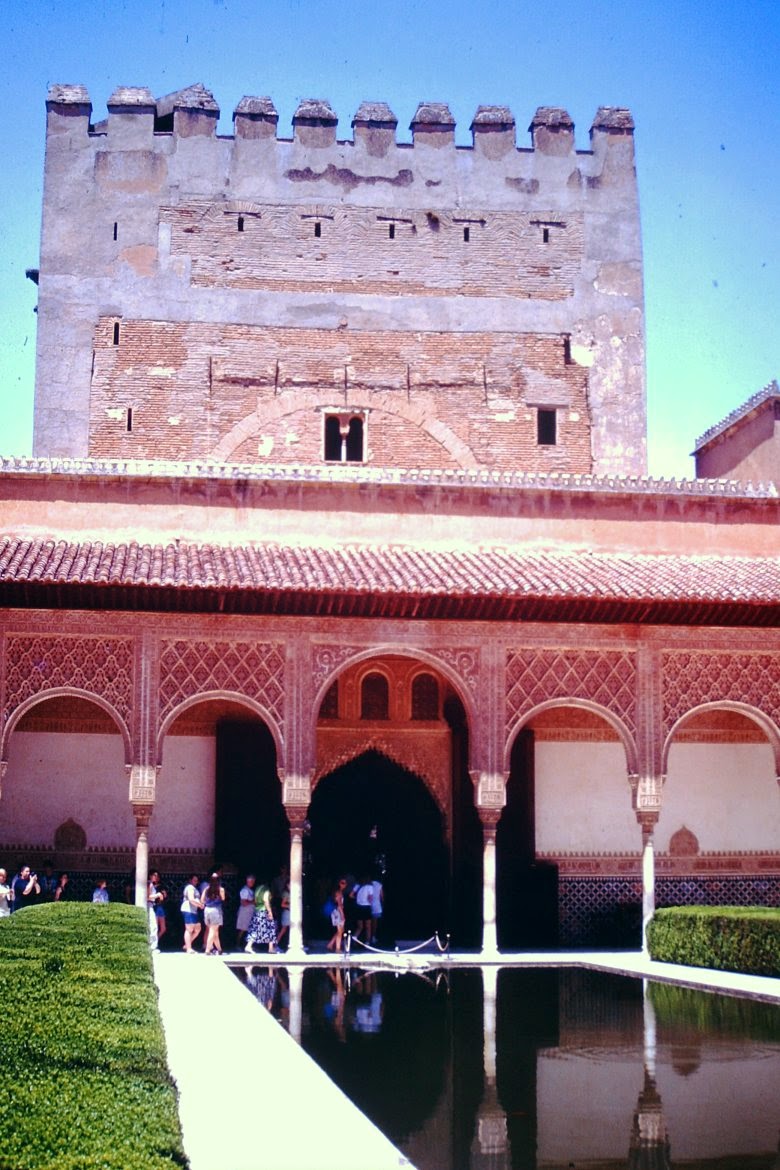In my previous post, I mentioned that in 1998 I traveled to Spain with a group of students from the school where I taught.
One of the cities that we visited on our whirlwind tour was Granada in the southern region of Andalucía. Granada was the capital of the last Moslem kingdom of the Moors. In A.D. 711 the Moors crossed the Strait of Gibraltar and invaded most of the Iberian Peninsula. Throughout the Middle Ages, the Spanish Christian kingdoms gradually pushed the Moors to the south, and by the 14th century, the Kingdom of Granada was all that remained of the Moorish territory.
In the 1300s the Nasrid dynasty that ruled the kingdom, built a lavish fortress / palace on a hill overlooking the city. That palace, the Alhambra, is the most beautiful example of Moorish architecture in Spain, and one of the finest Islamic buildings anywhere in the world. It is today a UNESCO World Heritage Site.
In 1492 Granada fell to the Christian forces of Isabel and Fernando (we know them as Queen Isabella and King Ferdinand). It is quite amazing that the Alhambra survived to the present. It was used for a time as a palace by the Christian monarchs. Emperor Charles V tore down a portion of the complex to build a Renaissance style residence for himself. (It is odd that Charles, who had lamented the construction of a cathedral within the Great Mosque of Córdoba, should have committed the same atrocity by tearing down part of the Alhambra!) The building suffered centuries of neglect, being used at various times as a tenement and as a military barracks. In 1812 during the Napoleonic Wars, the French destroyed some of the fortress towers, and in 1821 an earthquake caused further damage. In 1828 the American author Washington Irving published his book "Tales of the Alhambra". The book resulted in renewed interest in the Alhambra, and the subsequent restoration of the palace. Today it is one of the most visited tourist attractions in Spain.
The Alhambra is a maze of courtyards and rooms covered with beautiful tile work and incredibly delicate plaster decoration.
The most famous portion of the Alhambra is the Court of the Lions. In the center of the courtyard is a fountain with marble sculptures of twelve lions at its base. The Moslem religion prohibits graven images, so representations of animals is unusual is Islamic art. It is probably for this reason that the lions are quite stylized.
A short distance away, across a ravine from the Alhambra, is another palace of the Moorish rulers, the Generalife (pronounced "hen-er-al-LEE-fay). The Generalife was the summer palace. The building is much simpler in style than the main palace, but it is surrounded by beautiful gardens, fountains and pools. The kings of Granada created a paradise on earth.












Lovely post - thanks!
ReplyDeleteThank you, Barbara!
DeleteI was here in 2011. The Alhambra complex is simply jaw-dropping; my travel buddy at the time opted out of seeing the last few buildings from sheer exhaustion. I can't say that I blame him.
ReplyDeleteGreat city. I still haven't been to Madrid, though....
It is indeed an incredibly beautiful place.
DeleteYou must get to Madrid someday. Even though it doesn't have as many "must-see" sights as Paris or London, for example, there is something about the city which really captivates me. I could honestly imagine myself living there.